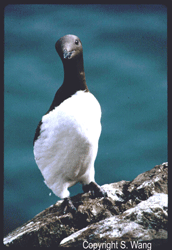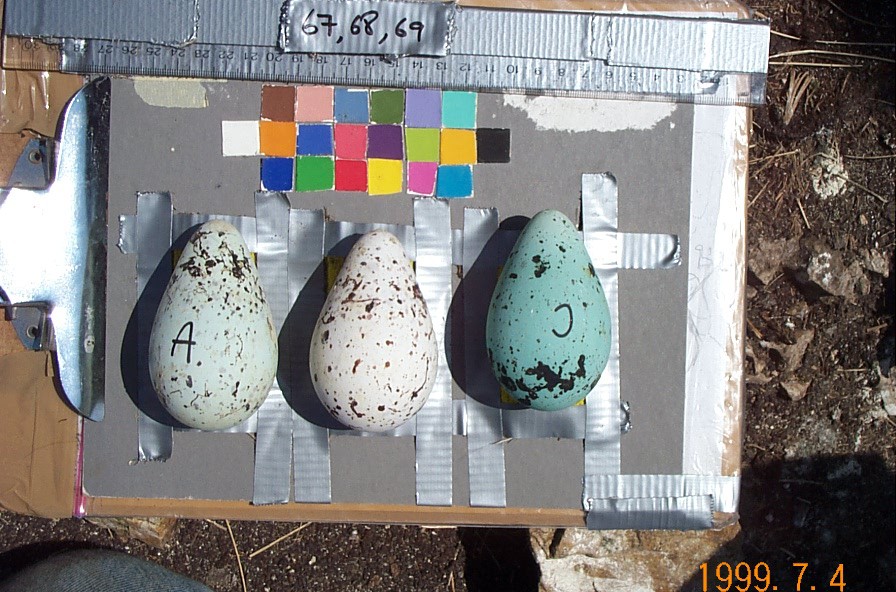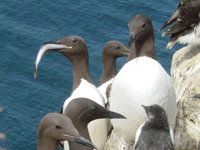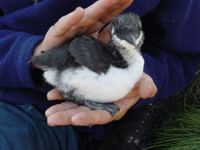Common Murre
(Uria aalge)




Triangle Island supports about 4,000 breeding pairs of Common Murres.
|
Common Murre
(Uria aalge) |
 |
||||||||
| Social and engaging, this largest species of Alcidae (1 kg) nests shoulder-to-shoulder on open cliff ledges, forming the densest breeding aggregations of any bird (in some situation, up to 75 pairs or more per square metre!). | |||||||||
 |
|||||||||
| The female lays a single egg that varies in colour from off-white to brilliant green-blue, and is marked with scribbles and rings and blotches, signals that the adult birds use to help them recognize their own egg. The egg hatches after about 33 days of incubation. | |||||||||
| Because they nest in the open, rather than in crevices or burrows as most other alcids do, one adult murre must remain with the chick to brood and protect it at all times. The off-duty parent delivers single fish several times per day. |  |
||||||||
 |
|||||||||
| Murres, and their close relative the Razorbill (an Atlantic species), are unusual in that the chick remains at the breeding site for only about three weeks, at which time it departs to sea, having attained less than one quarter its final adult weight. | |||||||||
| While mother remains at the colony, father accompanies the chick to sea and continues to feed it for up to 2 months, enabling the chick to complete its development.
Triangle Island supports about 4,000 breeding pairs of Common Murres. |
|||||||||